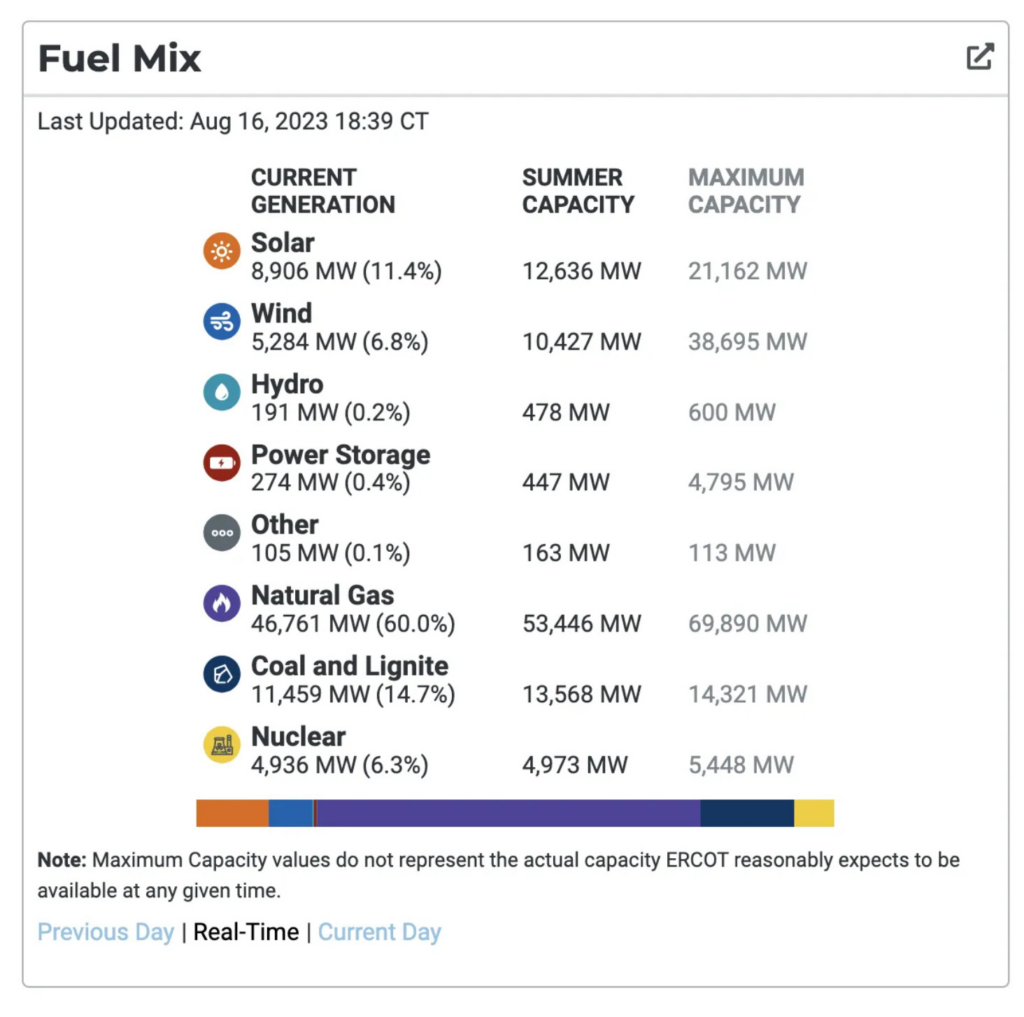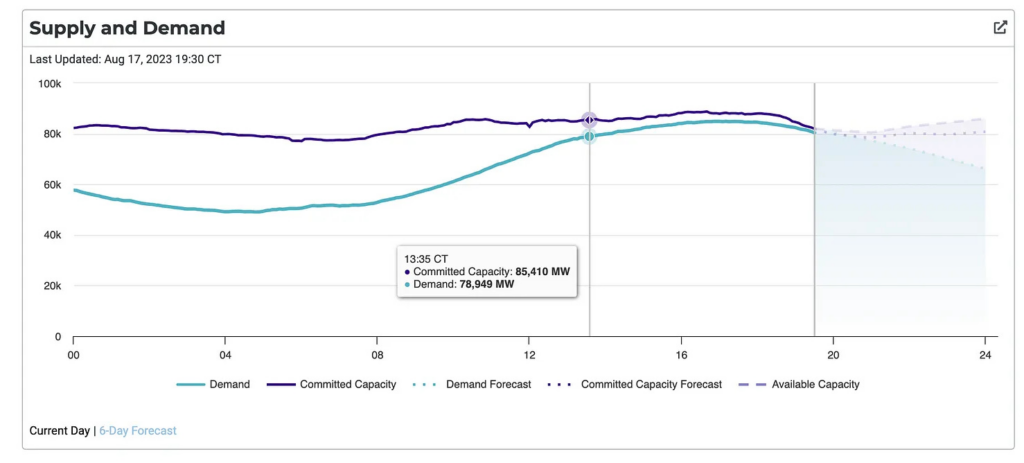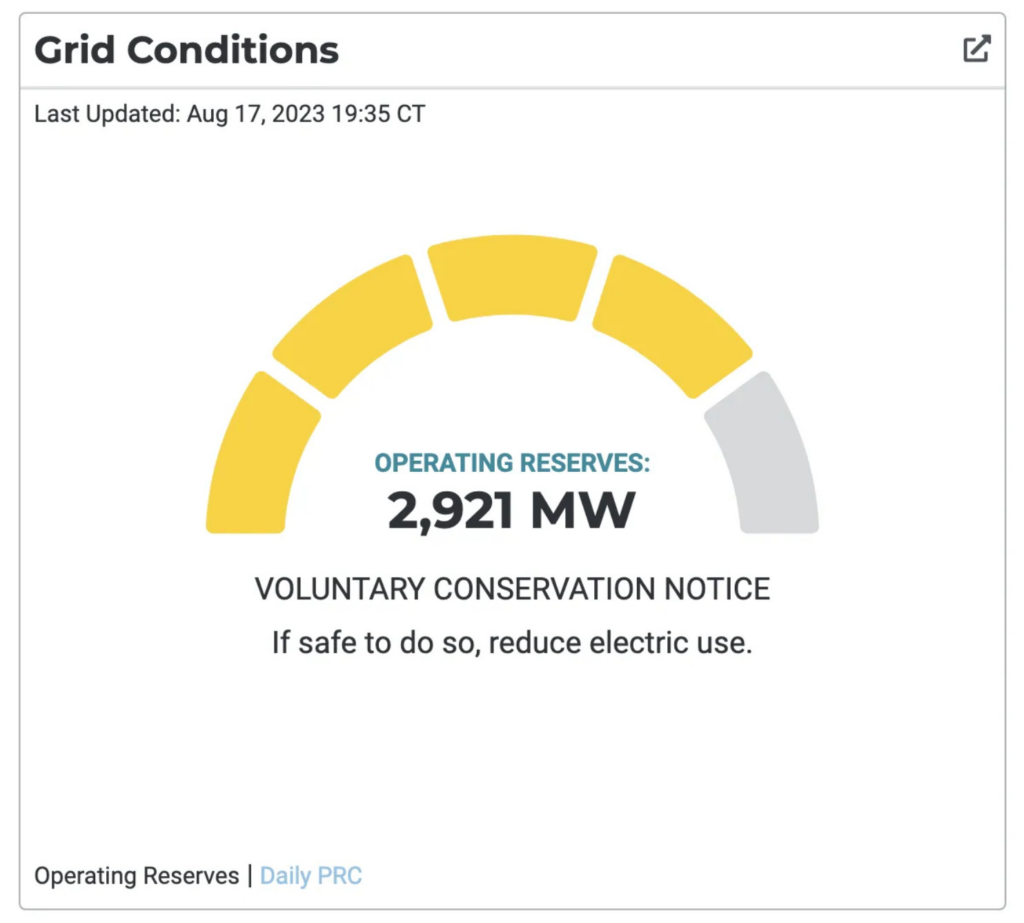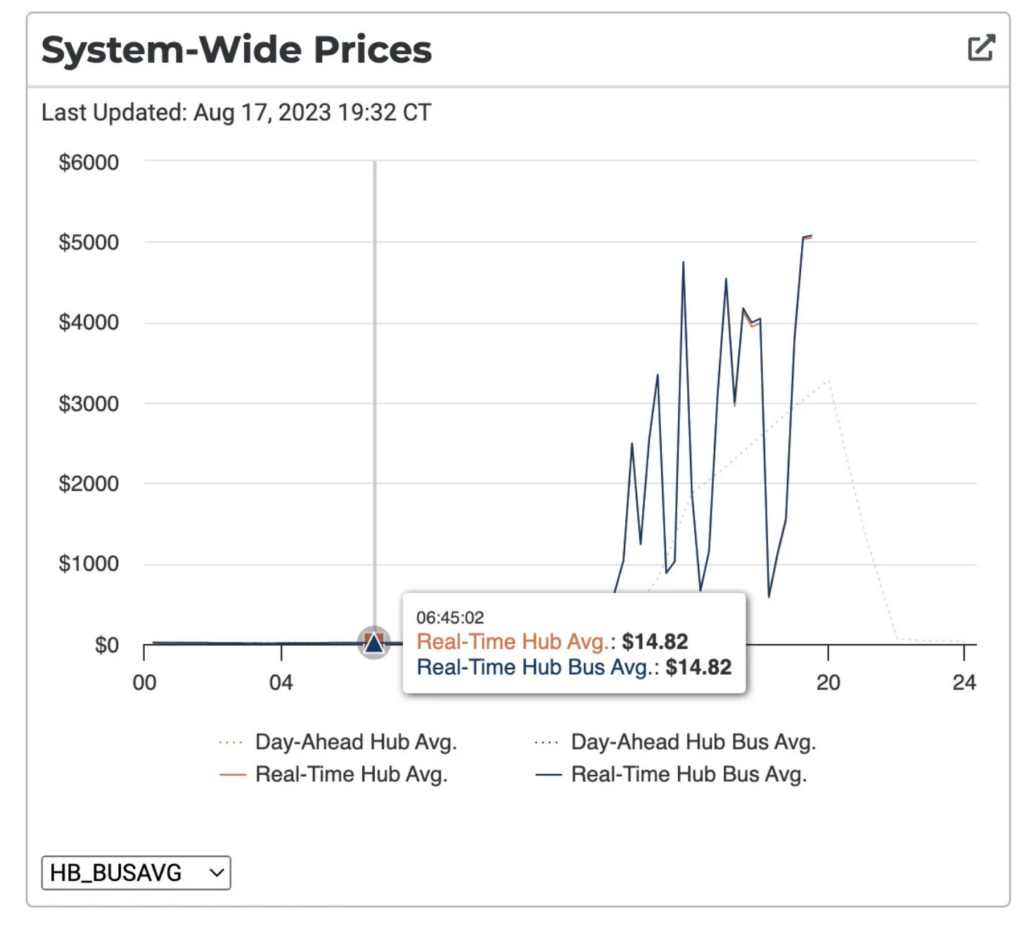Wind Output Plaguing Texas (ERCOT weathers on)
By Ed Ireland -- August 21, 2023
“Failures of wind and solar during severe weather events are a problem, but a larger problem is that failures are not confined to severe winter storms. In fact, these failures occur on a daily and even hourly basis. During the summer months, wind tends to die down in the afternoons, causing large drops in wind-generated electricity. Later afternoon rain storms can reduce solar generation significantly.”
Texas is blessed with mineral and natural resources. Texas is the largest crude oil and natural gas producer in the US. It would be the world’s 4th largest producer if Texas were a country.
For reasons of politics and government intervention over a quarter-century, Texas is the largest wind power producer and second-largest solar producer in the U.S. and will likely surpass California, the leading solar power state, within a year.
We long have been told that wind and solar can replace coal, oil, and natural gas for power generation, but nothing could be farther from the truth. Wind and solar are dilute, intermittent sources that depend on the weather. If the wind is blowing and the sun is shining, they may work to some extent, but the weather changes constantly, and so does their ability to produce electricity.
An epic failure of wind and solar in Texas was during Winter Storm Uri in February 2021. While there were failures in all types of generation, including coal, nuclear, and natural gas, due to the sub-freezing and even sub-zero temperatures, wind turbine freeze-ups were a major problem for the ERCOT system. (Ruined margins for the reliables from wind/solar had a major negative effect too in setting up the failure, a separate story.)
Less than two years later, in December of 2022, wind and solar failed again during Winter Storm Elliot, but the State had learned some lessons from Uri and was prepared with sufficient natural gas, coal, and nuclear-generated electricity.
Failures of wind and solar during severe weather events are a problem, but a larger problem is that failures are not confined to severe winter storms. In fact, these failures occur on a daily and even hourly basis. During the summer months, wind tends to die down in the afternoons, causing large drops in wind-generated electricity. Later afternoon rain storms can reduce solar generation significantly.
Peak Demand, Unreliable Supply
The summer of 2023 has been a very hot one as a result of two weather overlapping events: El Nino and the eruption of the Hunga Tonga–Hunga Ha’apai volcano eruption, with El Nino bringing in hot air from the west and the HTHH forming a heat cap, resulting from the extremely large volume of water vapor accompanying the eruption.
The enhanced greenhouse effect? Not so much because the GHG ‘signal’ has a winter, night, high latitude character–not Texas summer afternoons. Abruptness (Spring was relatively normal) fits nature, not the human influence.
The resulting summer heat has stressed many power grids due to higher-than-normal cooling demand. The combination of these two weather events has produced very hot summer conditions in the US and other parts of the world and added another layer of stress to power grids.
In Texas, the higher-than-normal air conditioning loads coupled with its high installed capacity of wind and solar have been challenging for the load management on the ERCOT power grid for two reasons: (1) the wind tends to subside on hot afternoons, and (2) solar panels lose capacity due to the high temperatures. This leads to a double whammy for the Texas power grid of losing electric generating capacity from both wind and solar.
These losses are documented on the ERCOT “Dashboards” as shown below for Thursday, August 17, 2023:

Note that the Maximum Capacity for solar is 21,162 megawatts (MW), while its summer capacity is only 12,636 MW. The “Maximum Capacity” for wind is 38,695 MW, while its Summer Capacity is only 10,427 MW. The low summer capacity for wind is due to the fact that winds die down in hot afternoons, so wind turbines fail to produce anywhere near their capacities. Solar panels are less efficient in converting sunlight to electricity at warmer temperatures. Note that the solar panels in this example were performing near their “Summer Capacity” earlier that day on August 16, 2023, but this screenshot was taken at 8:30 PM when the sun was setting, and the temperature had declined.
With Coal and Nuclear operating at their maximum levels (coal is actually producing over its Summer Capacity), the power grid is dependent on natural gas to keep the lights on and the air conditioning running, and it did its job, producing 60% of the power being produced on the grid.

Nevertheless, the ERCOT power grid dropped below its acceptable minimum level of 3 MW, as shown in the graphic below, which is an automatic voluntary conservation notice.

This low level of operating reserves is reflected in the “System-wide Prices” graph shown below, which shows that spot prices for natural gas reached $5,000 per megawatt for a few minutes, which is the maximum price allowed on the ERCOT system.

Price spikes are a predictable consequences of faulty supply-side energy reliance.
Conclusion
Wind and solar are not reliable enough to maintain grid stability and therefore require dispatchable power sources such as coal, nuclear, and natural gas-powered generation to stabilize the grid. Until sufficient utility-scale battery storage is available, which is unlikely anytime soon due to the cost of current technologies, the ERCOT power grid and all others will require substantial natural gas generation capacity to maintain grid stability.
The Texas legislature understood this requirement and passed several bills with appropriate spending to keep the ERCOT power grid running with enough dispatchable power to maintain its reliability. ERCOT is doing a commendable job managing the Texas power grid this hot summer–even with the largest wind and second-largest solar portfolio in the US–thanks to Texas being the largest natural gas producer in the country.
Views: 60
Comment
© 2025 Created by Webmaster.
Powered by
![]()
You need to be a member of Citizens' Task Force on Wind Power - Maine to add comments!
Join Citizens' Task Force on Wind Power - Maine